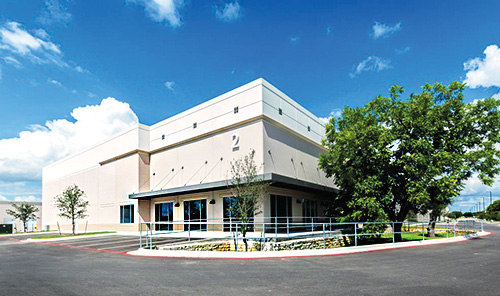In Focus: Last-Mile Distribution Drives Industrial Demand in Secondary Markets
Retailers are rethinking their supply chain management and locating closer to the end customer to meet their lightning-fast delivery expectations.
Q3 2019

For example, major consumer product retailers like furniture distribution companies have historically served Texas from Houston and the Dallas-Fort Worth metroplex. However, to meet delivery expectations for customers in Central Texas, they now need a significant presence in Austin or San Antonio, and in some cases both. In Austin, almost all the bulk warehouse inventory supports e-commerce deliveries to the immediate area, rather than being shipped to other metros. Most recently, two major furniture groups — Wayfair and Four Hands — took 80 percent of the leased space at Southpark Commerce Center V, choosing the 350,000-square-foot center to support their Austin customer base.
With a booming job market, Austin has been the fastest-growing large metro in the U.S. for the last eight years, highlighting the need for a sophisticated logistics strategy for consumer product companies. However, the trend isn’t limited to Austin or even Texas. Secondary markets across the country with growing populations are seeing similar trends.
The nature of the consumer product sector in secondary markets is that inventory is typically consumed in the same market in which it is warehoused, and much of the population growth in these areas is attributed to younger generations that are more likely to shop online. The nature of the consumer product sector in secondary markets is that inventory is typically consumed in the same market in which it is warehoused, and much of the population growth in these areas is attributed to younger generations that are more likely to shop online. Their needs include many of the purchases being made by first-time home buyers, including furniture and appliances, as well as everyday household goods. No matter the size of the product, consumers are no longer willing to wait a week for delivery. If an appliance or furniture store says delivery will take a week or more, it will lose the sale four out of five times.
Nashville, Tenn., and Charleston, S.C., are two other prime examples of cities attracting young professionals with strong job prospects. In the escalated war for talent, companies are relocating to these cities, which in turn attracts more residents and institutional capital and new development. For example, a new project called Charleston Logistics Center will serve a vital role in the supply chain strategies of many companies serving that market.
As both the populations of secondary markets and the popularity of online shopping continue to grow, so will the industrial real estate that serves them. The challenge for retailers that need large industrial warehouse and distribution footprints then becomes balancing the equation of storing product close to the consumer without taking on too much space.
Project Announcements
Australia-Based Aquatic Leisure Technologies Group Plans Opp, Alabama, Manufacturing Operations
12/11/2025
Teradyne Plans Wixom, Michigan, Robotics Operations
12/11/2025
Robinson Plans Altoona, Iowa, Manufacturing Operations
12/11/2025
BioTouch Expands Columbus, Georgia, Operations
12/11/2025
Natrion Plans Erie County, New York, Battery Components Operations
12/11/2025
Czech-Based GZ PrintPak Expands Mount Pleasant, Wisconsin, Manufacturing Operations
12/11/2025
Most Read
-
The Workforce Bottleneck in America’s Manufacturing Revival
Q4 2025
-
Rethinking Local Governments Through Consolidation and Choice
Q3 2025
-
First Person: Filter King’s Expansion Playbook
Q3 2025
-
Lead with Facts, Land the Deal
Q3 2025
-
How Canada Stays Competitive
Q3 2025
-
Investors Seek Shelter in Food-Focused Real Estate
Q3 2025
-
America’s Aerospace Reboot
Q3 2025